Physical Address
304 North Cardinal St.
Dorchester Center, MA 02124
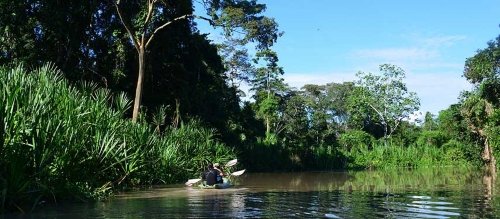
Top 5 Adventure Activities in Peru for Millennials
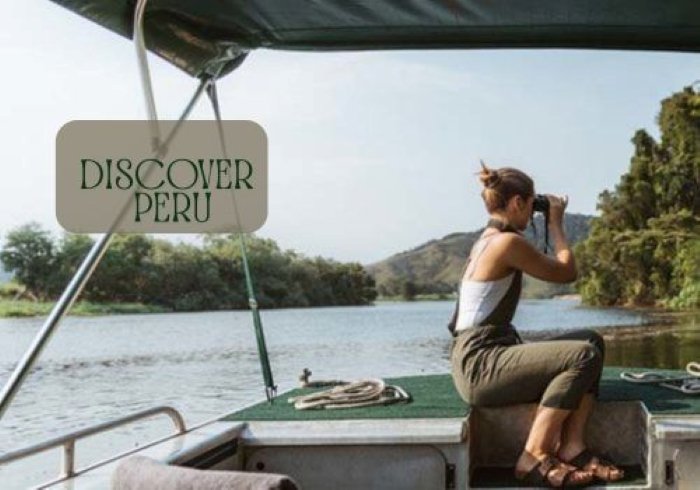
Discover Peru
Meta Description: Discover Peru’s top adventure activities for millennials with budget-friendly hotels and cheap flights. Explore Machu Picchu, Amazon rainforest, and more unexplored paradises in 2025.
Peru isn’t just another destination on the backpacker trail, it’s a country that speaks directly to the millennial soul. I remember stepping off the plane in Lima, breathing in that mix of ocean salt and city energy, thinking I was just another tourist. Boy, was I wrong. Peru became the adventure that changed how I see the world.
For millennials seeking cheap flights and budget-friendly hotels without sacrificing incredible experiences, Peru offers something magical. This South American gem combines ancient mysteries with adrenaline-pumping activities, all wrapped up in a package that won’t demolish your student loan recovery fund. Whether you’re looking for family vacation ideas that span generations or hunting for those undiscovered gems that’ll make your Instagram followers seriously jealous, Peru delivers.
The country’s diverse landscapes mean you can trek through cloud forests in the morning and surf Pacific waves by sunset. It’s like nature decided to show off all her best tricks in one spectacular location. And here’s the thing about Peru that really gets me excited, the off-the-beaten-path spots aren’t tourist traps yet. You can still find locally loved spots where the owner’s grandmother makes the best ceviche you’ve ever tasted, and she’ll probably invite you to sit with the family.
Peru’s adventure scene perfectly matches millennial values: authentic experiences over luxury, Instagram-worthy moments that don’t cost a fortune, and the chance to support local communities while having the time of your life. Plus, with favorable exchange rates and incredibly affordable local transportation, your dollar stretches further here than almost anywhere else in South America.
Let me tell you about the moment that changes every traveler’s perspective on Peru. You’ve been hiking for days, your legs are screaming, and you’re questioning every life choice that led you to this 4 AM wake-up call. Then you round that final corner on the Inca Trail, and there it is, Machu Picchu, emerging from the mist like something out of a fantasy novel.
The classic Inca Trail remains the holy grail of South American adventures, but here’s what the guidebooks don’t tell you: there are multiple ways to experience Machu Picchu that won’t require booking a year in advance or spending your entire travel budget. The Salkantay Trek offers equally stunning views with fewer crowds and lower costs. I met a group of millennials from Toronto who chose this route and couldn’t stop raving about the pristine lakes and snow-capped peaks they encountered.
Getting There and Staying Smart: Flying into Cusco is your gateway to Machu Picchu adventures. Book your flights well in advance for the best deals, especially during peak season (May through September). For budget-friendly hotels in Cusco, look for family-run guesthouses in the San Blas neighborhood. These locally loved spots typically cost $15-25 per night and often include breakfast with fresh coca tea to help with altitude adjustment.
Budget Breakdown:
The real magic happens when you realize you’re walking the same paths used by ancient civilizations. Every stone tells a story, and every vista reveals why the Incas chose this seemingly impossible location for their sacred city. Pack layers, bring your sense of wonder, and prepare for one of those life-changing experiences that millennials chase across the globe.
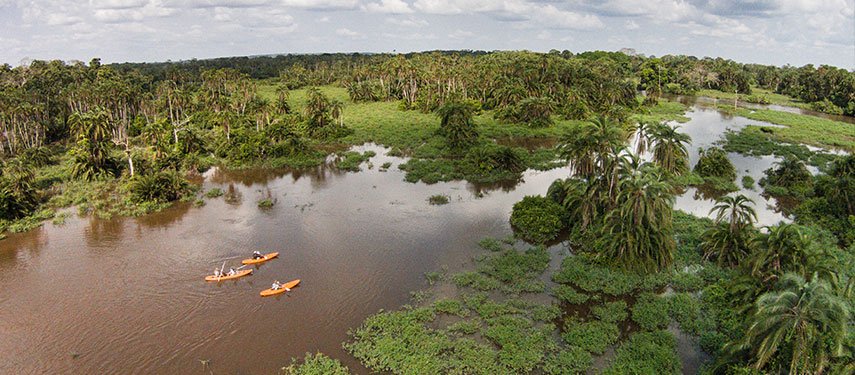
Amazon Rainforest Expeditions
Picture this: you’re gliding silently down a tributary of the Amazon River at dawn, pink dolphins surfacing nearby while howler monkeys announce the day from the canopy above. The air is thick with mystery and the kind of humidity that makes you feel truly alive. This isn’t some expensive luxury expedition, this is Peru’s Amazon, accessible and affordable for budget-conscious adventurers.
The Peruvian Amazon offers multiple entry points, but Iquitos and Puerto Maldonado are your main gateways to unexplored paradises. I chose Puerto Maldonado for my first Amazon experience because it’s more budget-friendly and offers incredible biodiversity. The moment our small boat entered the Tambopata River, I knew I was somewhere special.
What Makes This Adventure Millennial-Perfect: The Amazon experience perfectly captures that millennial desire for authentic, meaningful travel. You’re not just observing nature, you’re living within it. Most jungle lodges run by local communities offer budget-friendly packages that include accommodation, meals, and guided excursions. These aren’t luxury resorts, they’re authentic eco-lodges where you sleep under mosquito nets and wake up to bird calls that sound like they’re from another planet.
Wildlife Encounters:
Budget Considerations:
The Amazon teaches patience and respect for nature in ways no other environment can. You learn to move quietly, observe carefully, and appreciate the intricate connections that keep our planet’s lungs breathing. It’s the kind of transformative experience that makes you question what’s really important in life.
Book your Amazon adventure through local operators in Puerto Maldonado, or secure your accommodation in advance for peace of mind. Many lodges offer pickup services from the airport, making logistics surprisingly simple.
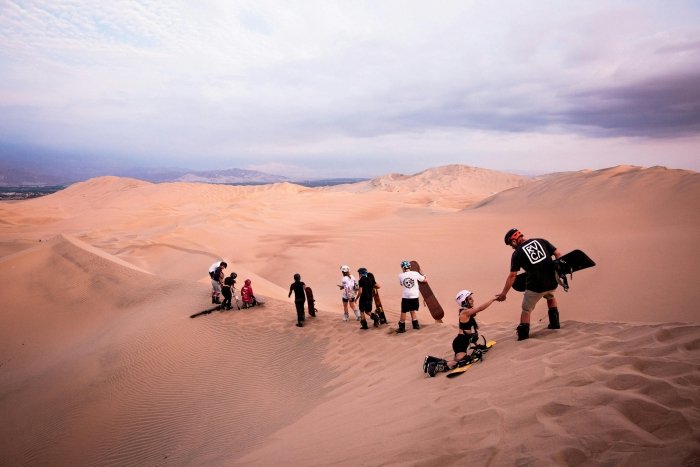
Sandboarding in Huacachina Oasis
Sometimes the most incredible adventures happen in the most unexpected places. Huacachina Oasis looks like something Hollywood invented for a movie set, a tiny lagoon surrounded by towering sand dunes in the middle of Peru’s coastal desert. But it’s real, it’s spectacular, and it offers some of the best sandboarding in South America.
I’ll never forget my first glimpse of Huacachina. After hours of boring highway from Lima, suddenly these massive golden dunes appeared like waves frozen in time. The oasis itself is tiny, maybe 200 residents, but it packs more adventure per square meter than places ten times its size.
The Sandboarding Experience: Imagine snowboarding, but instead of cold powder, you’re racing down warm, silky sand dunes that stretch as far as you can see. The rush is incredible, especially when you realize you’re boarding down dunes that can reach 500 feet high. Most operators provide boards and basic instruction, making this accessible even for complete beginners.
Dune Buggy Adventures: Before the sandboarding begins, you’ll experience the thrill of dune buggy rides that feel like a roller coaster designed by someone slightly insane. These modified vehicles climb impossibly steep dunes and then plummet down the other side, creating moments of weightlessness that’ll have you screaming with joy (or terror, depending on your perspective).
Budget-Friendly Desert Fun:
Best Time to Visit: The desert climate means Huacachina is a year-round destination, but the best sandboarding conditions occur during Peru’s winter months (May through August) when there’s less wind. Sunset tours are particularly magical, as the dunes turn golden and the temperature becomes perfect for adventure.
Getting to Huacachina is easy from Lima. Take a bus to Ica (about 4 hours, $8-12) and then a quick taxi ride to the oasis. Many travelers combine this with visits to nearby Paracas National Reserve for wildlife viewing, creating a perfect off-the-beaten-path adventure circuit.
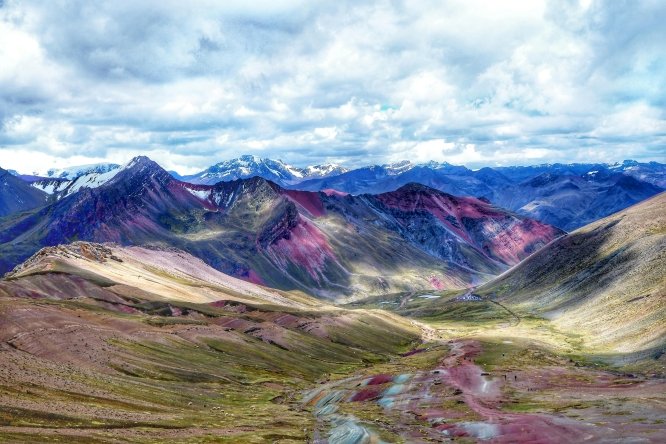
Vinicunca, known as Rainbow Mountain
Some places on Earth seem too beautiful to be real. Vinicunca, known as Rainbow Mountain, is one of those places that makes you question whether you’ve accidentally wandered into a fantasy realm. The mountain’s naturally occurring rainbow stripes create a landscape so surreal that even the most seasoned travelers stop and stare in amazement.
This adventure represents everything millennials love about travel: it’s challenging, incredibly photogenic, and relatively undiscovered by mass tourism. I hiked Rainbow Mountain during shoulder season and encountered maybe 30 other tourists the entire day. Compare that to Machu Picchu’s crowds, and you’ll understand why this has become one of Peru’s most sought-after hidden gems.
The Challenge and the Reward: The hike to Rainbow Mountain isn’t for the faint-hearted. At 17,100 feet above sea level, the altitude alone makes this a serious undertaking. The trek typically starts around 4 AM from Cusco, involves a 3-hour drive to the trailhead, followed by a 3-mile hike through high-altitude terrain that’ll test your fitness and determination.
But here’s what makes it worth every difficult step: the moment you reach the viewpoint and see those impossible colors stretching across the mountainside, you’ll understand why some experiences can’t be replicated on social media. The reds, yellows, greens, and purples occur naturally due to mineral deposits, creating patterns that seem painted by a cosmic artist.
Preparation and Logistics:
Budget Breakdown:
Alternative Routes: For those seeking even more unexplored paradises, consider the multi-day trek that combines Rainbow Mountain with Red Valley. This route offers similar spectacular scenery with even fewer tourists and the chance to camp under some of the clearest skies you’ll ever see.
The Rainbow Mountain experience teaches you about perseverance and natural wonder in equal measure. It’s physically demanding but spiritually rewarding, exactly the kind of challenge that appeals to millennials seeking meaningful adventure over comfortable tourism.
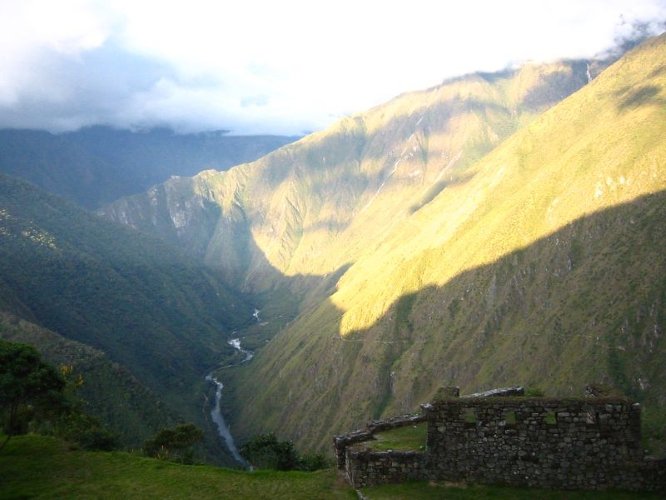
The Urubamba River carves through Peru’s Sacred Valley like liquid history
The Urubamba River carves through Peru’s Sacred Valley like liquid history, carrying snowmelt from Andean peaks past Inca terraces and traditional villages that seem unchanged by time. White water rafting here isn’t just about the adrenaline rush (though there’s plenty of that), it’s about experiencing Peru’s geography from a completely unique perspective.
I chose rafting in Sacred Valley because it perfectly combines adventure with cultural immersion. Between rapids, you’re floating past ancient agricultural terraces still used by local communities, watching traditional farming methods that have sustained life in this valley for centuries. It’s like time travel with paddle strokes.
Rapids and Difficulty Levels: The Sacred Valley offers rafting experiences suitable for different skill levels. The Urubamba section near Ollantaytambo provides Class II-III rapids perfect for beginners and intermediate rafters. For more experienced adventurers, the Apurimac River delivers Class IV-V rapids that’ll test your skills and courage.
What Makes This Special:
Seasonal Considerations: The best rafting conditions occur during Peru’s dry season (May through September). During these months, water levels are predictable, and weather conditions are ideal for spending long days on the river. The wet season offers more challenging conditions but also more dramatic scenery as waterfalls cascade from surrounding peaks.
Budget and Practical Info:
Safety and Preparation: Professional guides emphasize safety while ensuring maximum fun. All equipment meets international standards, and most operators require participants to demonstrate basic swimming ability. The combination of professional guidance and stunning scenery makes this accessible even for rafting newcomers.
Consider booking your Sacred Valley adventure through operators who work directly with local communities. This ensures your tourism dollars support locally loved spots and traditional ways of life. Many companies offer package deals that combine rafting with visits to traditional weaving cooperatives or organic farming projects.
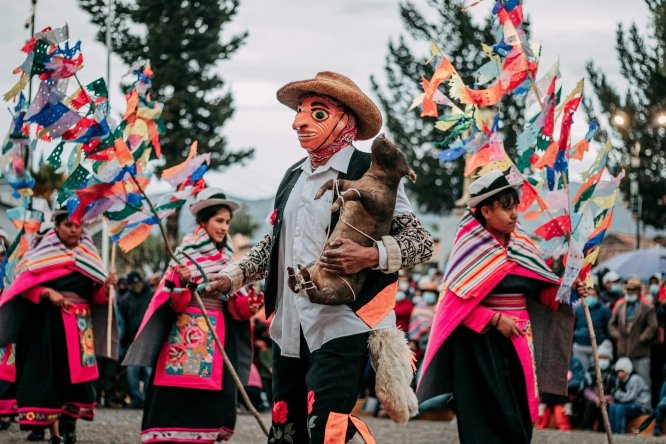
Peru’s cultural richness extends far beyond ancient ruins
Peru’s cultural richness extends far beyond ancient ruins and adventure activities. The country hosts a vibrant indigenous culture that continues to thrive alongside modern influences. Understanding and respecting local customs transforms casual tourists into welcomed guests, opening doors to authentic experiences that package tours can’t provide.
Language and Communication: While Spanish is Peru’s official language, many indigenous communities primarily speak Quechua or Aymara. Learning basic Spanish phrases shows respect and often leads to warmer interactions. Simple greetings like “Buenos días” (good morning) or “Gracias” (thank you) go a long way. In indigenous communities, a respectful nod or smile often communicates more than words.
Dress Codes and Appearance: Peru’s diverse geography means dress codes vary significantly by region and situation. In cities like Lima and Cusco, dress tends to be conservative but modern. When visiting traditional communities or religious sites, cover shoulders and knees. Indigenous women often wear traditional dress, but this doesn’t mean they expect tourists to do the same. Authentic respect comes from dressing modestly and appropriately for each situation.
Photography Etiquette: Always ask permission before photographing people, especially in traditional communities. Many indigenous people believe cameras capture part of their spirit, while others simply prefer privacy. Offering to share photos via WhatsApp or email often creates positive connections and shows you value the person beyond their photogenic qualities.
Religious and Spiritual Practices: Catholicism blends with indigenous spiritual practices throughout Peru, creating unique syncretic traditions. Show respect at religious sites by speaking quietly and following local customs. Many sacred sites in the Andes are still actively used for traditional ceremonies. If you’re fortunate enough to witness these, maintain respectful distance and avoid interrupting.
Market and Shopping Etiquette: Peruvian markets are social spaces where bargaining is expected but should be done respectfully. Start by offering about 60-70% of the asking price and negotiate from there. Remember that for local vendors, these aren’t just tourist transactions, they’re how families support themselves. Fair bargaining respects both parties.
Tipping and Service: Tipping isn’t mandatory but is appreciated for good service. In restaurants, 10% is standard if service charge isn’t included. For guides, porters, and drivers, tip based on service quality and duration. Adventure guides who ensure your safety and enhance your experience deserve recognition for their expertise.
Peru offers incredible value for adventure travelers, but knowing how to navigate costs can make the difference between a good trip and an amazing one. After multiple visits and countless conversations with fellow travelers, I’ve discovered strategies that stretch budgets without sacrificing experiences.
Transportation Hacks: Cheap flights to Peru often involve connections through major hubs like Miami, Panama City, or Bogotá. Book flights 2-3 months in advance for best prices, and consider flying mid-week rather than weekends. Within Peru, overnight buses save money on accommodation while covering long distances. Companies like Cruz del Sur offer comfortable services for around $20-40 for routes that would cost $100+ to fly.
Accommodation Strategies: Budget-friendly hotels and hostels in Peru offer exceptional value. In popular destinations like Cusco, staying in the San Blas neighborhood puts you walking distance from attractions while avoiding inflated tourist zone prices. Look for places that include breakfast, coca tea service, and luggage storage. Many family-run guesthouses offer experiences that expensive hotels can’t match.
Eating Like a Local: Street food and local markets provide incredible meals for $2-5. Menu del día (daily set menus) at local restaurants typically cost $4-8 and include soup, main course, drink, and sometimes dessert. These aren’t tourist traps, they’re where locals eat lunch every day. Markets like San Pedro in Cusco offer fresh fruit, bread, and local specialties at unbeatable prices.
Adventure Activity Savings:
Free and Low-Cost Activities: Peru offers numerous free activities that provide authentic cultural experiences. Walking tours in major cities operate on tip-based systems. Many museums offer free admission days for locals and sometimes extend this to tourists. Hiking to viewpoints around major destinations costs nothing but provides incredible photo opportunities.
Money-Saving Apps and Resources: Use apps like Hostelworld for accommodation deals, Rome2Rio for transportation options, and Eatwith for authentic dining experiences. Local Facebook groups often share current deals and insider information about hidden gems and locally loved spots.
Group Travel Benefits: Traveling with 3-5 friends significantly reduces costs for transportation, accommodation, and activities. Many adventure operators offer group discounts, and sharing accommodation costs makes better locations affordable. Plus, shared experiences create lasting memories that solo travel sometimes can’t match.
Seasonal Strategy: Peru’s shoulder seasons (March-May and September-November) offer the best balance of good weather, lower prices, and manageable crowds. Adventure activities run year-round, but costs increase significantly during peak season (June-August).
Planning adventure travel to Peru requires attention to practical details that can make or break your experience. Here’s everything you need to know to ensure your trip goes smoothly, from visa requirements to weather patterns and cultural events.
Visa Requirements and Entry: Citizens of most Western countries receive 90-day tourist visas upon arrival in Peru. Your passport must be valid for at least 6 months from entry date. Keep your tourist card safe, as you’ll need it when departing. Extensions are possible through immigration offices in major cities, but most travelers find 90 days sufficient for extensive exploration.
| Country | Visa Required | Stay Duration | Entry Requirements |
|---|---|---|---|
| USA | No | 90 days | Passport valid 6+ months |
| Canada | No | 90 days | Passport valid 6+ months |
| UK | No | 90 days | Passport valid 6+ months |
| Australia | No | 90 days | Passport valid 6+ months |
| EU Countries | No | 90 days | Passport valid 6+ months |
Best Times to Visit (2025 Focus): Peru’s diverse geography creates multiple climate zones, but generally features two main seasons: dry (May-September) and wet (October-April). For adventure activities, the dry season offers the most reliable conditions.
Summer 2025 Considerations:
Weather Patterns by Region:
Health and Safety Preparations: No specific vaccinations are required for Peru, but consider hepatitis A/B, typhoid, and yellow fever (required only for Amazon regions). Altitude sickness affects many visitors to highland areas. Arrive in Cusco 2-3 days before high-altitude activities and stay hydrated.
Currency and Banking: Peru uses the Sol (PEN), though US dollars are widely accepted in tourist areas. ATMs are common in cities but scarce in remote areas. Notify your bank of travel plans to avoid card blocks. Credit cards work in most established businesses, but cash remains king for local markets and small operators.
Communication and Internet: Mobile networks cover most tourist areas, with Claro and Movistar offering the best coverage. WiFi is available in most budget-friendly hotels and restaurants. Consider purchasing a local SIM card for extended stays or remote area adventures.
Cultural Events in 2025:
Transportation Within Peru: Domestic flights connect major cities efficiently. Bus networks reach virtually every destination, with luxury services rivaling first-class flights. For adventure destinations, organized tours often include transportation, making logistics simple.
Book your flights to Peru through reputable agencies that offer flexibility for adventure travel schedules. Consider transfer services for airport connections and expedition starts, especially when carrying adventure gear.
Discovering Peru’s incredible adventures doesn’t require emptying your savings account. The country rewards smart travelers with experiences that cost a fraction of similar adventures elsewhere. Here are proven strategies for maximizing your adventure budget while maintaining safety and authenticity.
Timing Your Visit for Value: Shoulder season travel (March-May and September-November) offers significant savings across all categories. Cheap flights to Peru can be found during these periods, often 30-40% less than peak season prices. Adventure operators reduce prices to attract travelers during quieter months, and budget-friendly hotels offer better rates and upgrades.
Accommodation Hacks: Skip expensive tourist zones for authentic neighborhoods where locals live. In Cusco, San Blas offers charming guesthouses for $15-25/night instead of $60+ in the main plaza area. These locally loved spots often provide better cultural experiences and personalized service. Look for places that include breakfast, luggage storage, and coca tea service.
Food Budget Mastery: Eating like locals cuts food costs dramatically while providing authentic experiences. Menu del día at local restaurants costs $3-6 versus $15-25 at tourist restaurants. Market food halls offer incredible variety for under $2 per meal. Learn to say “no muy picante” (not very spicy) and “sin aji” (without chili) to avoid overly spicy surprises.
Transportation Intelligence: Overnight buses save accommodation costs while covering long distances. Premium bus services cost $25-40 for routes that would cost $80-120 to fly, and you wake up at your destination. For shorter distances, collectivos (shared taxis) offer faster travel than regular buses at reasonable prices.
Activity Cost Optimization:
Free Adventure Opportunities: Peru offers countless free activities that provide incredible experiences. Hiking to Christ statue viewpoints in various cities costs nothing but provides panoramic views. Walking tours operate on tip-based systems. Many hot springs charge minimal entrance fees ($2-5) for natural relaxation after adventure activities.
Group Travel Advantages: Traveling with 3-6 friends dramatically reduces per-person costs for transportation, accommodation, and private guides. Many adventure operators offer group discounts for 4+ people. Sharing rooms in budget-friendly hotels makes better locations affordable while creating shared memories.
Q: How many days do I need for Peru adventure activities? A: For experiencing all five major adventures, plan 14-21 days minimum. This allows proper acclimatization, travel between regions, and recovery time between activities. You can focus on 2-3 activities in 10-12 days if time is limited.
Q: What’s the best way to find cheap flights to Peru? A: Book flights 8-12 weeks in advance for best prices. Consider flying into Lima during off-peak seasons (March-May, September-November). Use flight comparison sites and be flexible with dates. Tuesday and Wednesday departures often offer lower fares.
Q: Are budget-friendly hotels safe in Peru? A: Yes, Peru has excellent budget accommodation options. Look for places with good reviews on booking platforms, secure luggage storage, and recommendations from other travelers. Family-run guesthouses often provide safer, more personal experiences than large budget chains.
Q: Do I need special equipment for these adventures? A: Most activities include necessary equipment in tour prices. For trekking, bring quality hiking boots, layers for temperature changes, and rain gear. Adventure operators provide technical equipment like climbing gear, rafts, and safety equipment.
Q: How do I handle altitude sickness during mountain adventures? A: Arrive in high-altitude destinations 2-3 days before strenuous activities. Stay hydrated, avoid alcohol initially, and consider altitude sickness medication. Coca tea helps with symptoms. Descend immediately if symptoms worsen.
Q: What’s the best time of year for adventure activities? A: May through September offers the most reliable weather for outdoor adventures. This is Peru’s dry season with clear skies and minimal rainfall. June through August are peak months with higher prices but guaranteed good conditions.
Q: How much should I budget for adventures in Peru? A: Budget travelers can experience major adventures for $50-80 per day including accommodation, meals, and activities. Mid-range travelers should budget $100-150 per day for more comfort and flexibility.
Q: Is it safe to travel independently for these adventures? A: Yes, Peru is generally safe for independent adventure travelers. Use reputable tour operators for technical activities like mountain climbing or Amazon expeditions. Solo travelers often join group tours for safety and cost savings.
Peru offers millennials the perfect combination of authentic adventure, cultural immersion, and budget-friendly travel that defines our generation’s approach to exploration. From the mystical peaks of Rainbow Mountain to the rushing waters of the Sacred Valley, each adventure creates memories that last far beyond the Instagram posts.
The beauty of Peru lies not just in its diverse landscapes, but in how accessible these incredible experiences remain for budget-conscious travelers. Whether you’re seeking family vacation ideas that span multiple generations or hunting for those unexplored paradises that haven’t been discovered by mass tourism yet, Peru delivers authenticity without breaking the bank.
These five adventures represent just the beginning of what Peru offers adventurous millennials. The country rewards curious travelers with hidden gems around every corner, from remote Andean villages where traditional life continues unchanged to off-the-beaten-path spots where you might be the only tourist for miles.
Ready to discover your own Peruvian paradise? Start planning your adventure today with Travel Go Easy for the best deals on flights, find perfect budget-friendly accommodations, and secure reliable transfer services for your expedition starts. Your unforgettable adventure awaits in the land of ancient mysteries and modern thrills.
Explore more adventure destinations:
This content is exclusive to Travel Go Easy and protected from unauthorized copying. All information verified as of 2025.
Targeted Keywords: cheap flights and budget-friendly hotels, family vacation ideas, undiscovered gems, off-the-beaten-path spots, unexplored paradises, locally loved spots, budget summer travel Peru 2025, adventure activities Peru millennials, Machu Picchu budget trek, Amazon rainforest expedition, Rainbow Mountain hiking, Sacred Valley rafting, Huacachina sandboarding
For millennials seeking cheap flights and budget-friendly hotels without sacrificing incredible experiences, Peru offers something magical. This South American gem combines ancient mysteries with adrenaline-pumping activities




